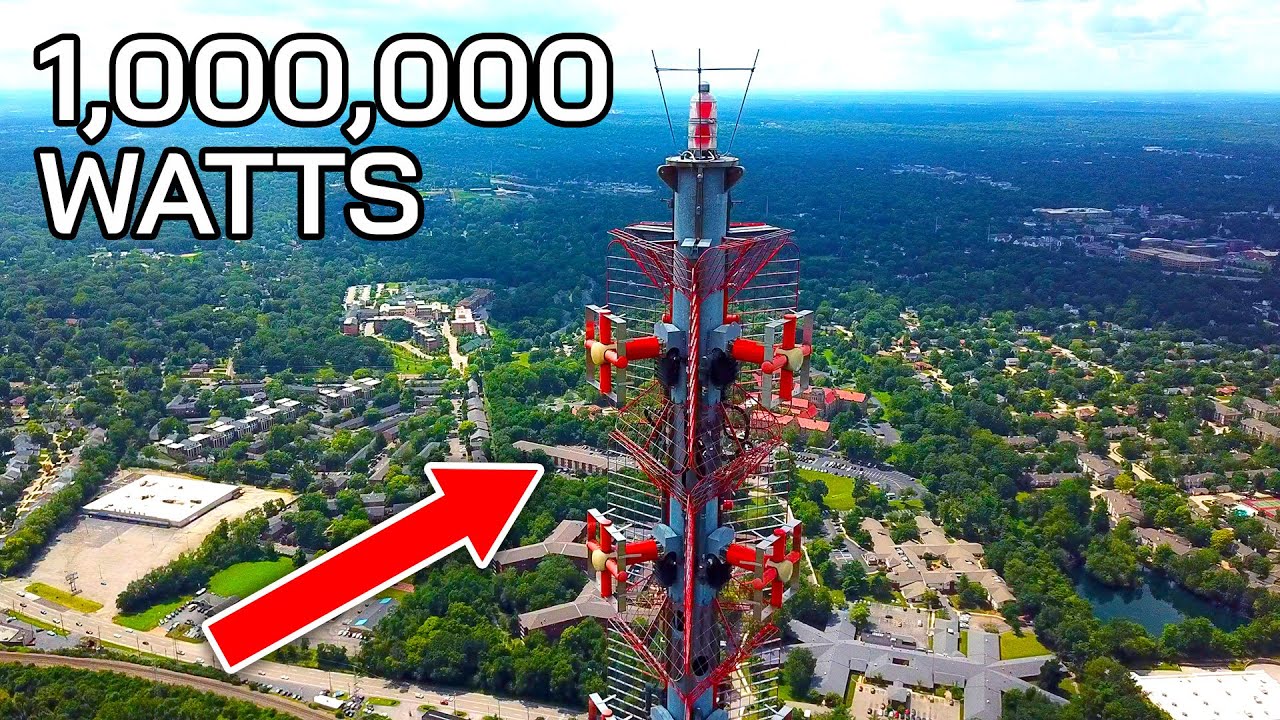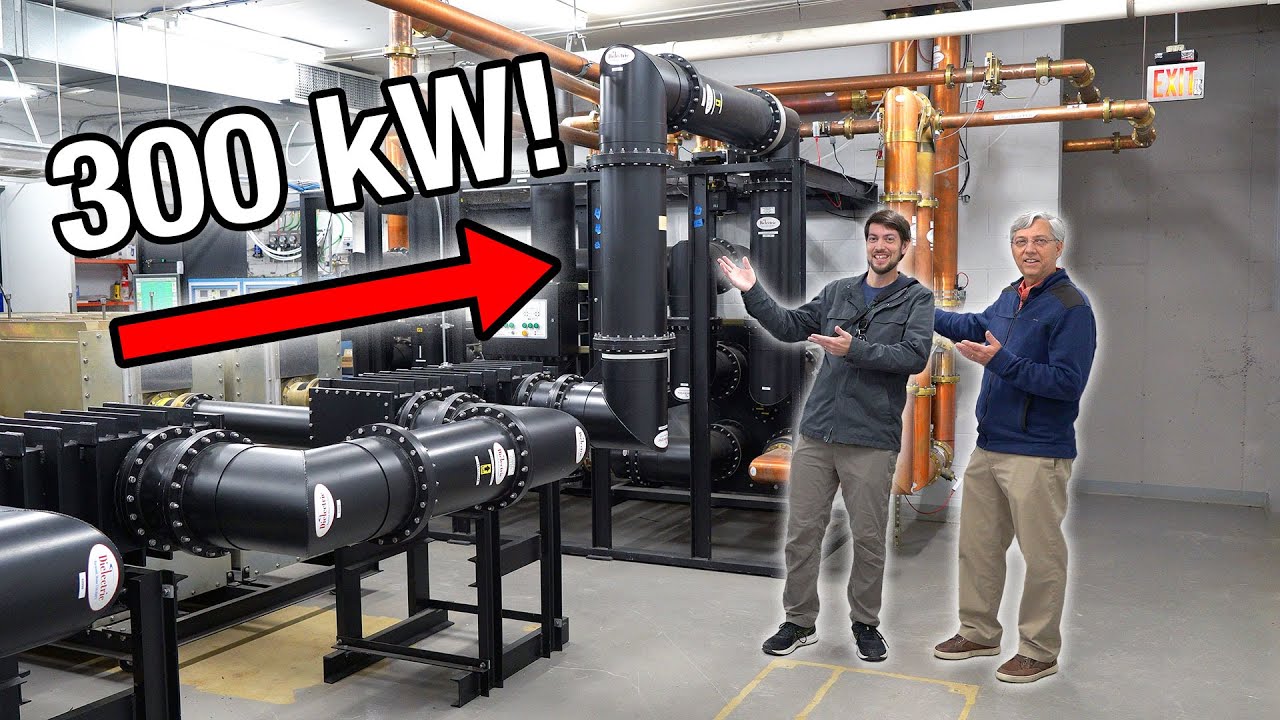The video title card may be misleading: the 340 metre tower, located in the St. Louis, Missouri suburb of Shrewsbury, has an effective radiated power of around a megawatt, which is the product of input power and antenna gain. The actual electrical power delivered to the antenna is on the order of 300 kilowatts, as explained in this companion video, along with other details of the tower and transmitter/combiner shack.
It is surprising that the entire weight of the tower is borne on such a small footprint. I imagine the concrete base must have a very high tolerance for compression. Intuitively, I would have expected the overall shape of the tower to have been pyramidal, with the base much wider to distribute the weight. I guess the guy wires permit strength and stability with much less structural material.
As I recall, they said that the tower rests on a steel pillar which is set in the concrete. This would allow the tower to sway with wind loads without flexing the structure or transmitting the lateral force into the foundation where it might cause fracturing or shifting against the surrounding earth.
Concrete is extremely strong in compression. What one must be careful with in using concrete is that it is very weak in tensile strength and will easily pull apart into rubble. This is why pre-stressed concrete uses pre-tensioned reinforcing bars within the concrete to ensure it remains in compression even if the structure is unloaded. This is particularly important in earthquake country, since it is known that some earthquakes can create vertical acceleration greater than one gravity.
Big Hurricane hit Pensacola Florida around 2003 (I think). The storm surge lifted/reduced the loading enough on some of the bridges that they failed.
The “pre-stress” was released….
When you’re out flying Class ‘G’ airspace (uncontrolled; 1 mile visibility & ‘clear of clouds’ daytime) remember the wires!
(…as in Goose exclaiming, “watch the mountains…!!)
![]()

